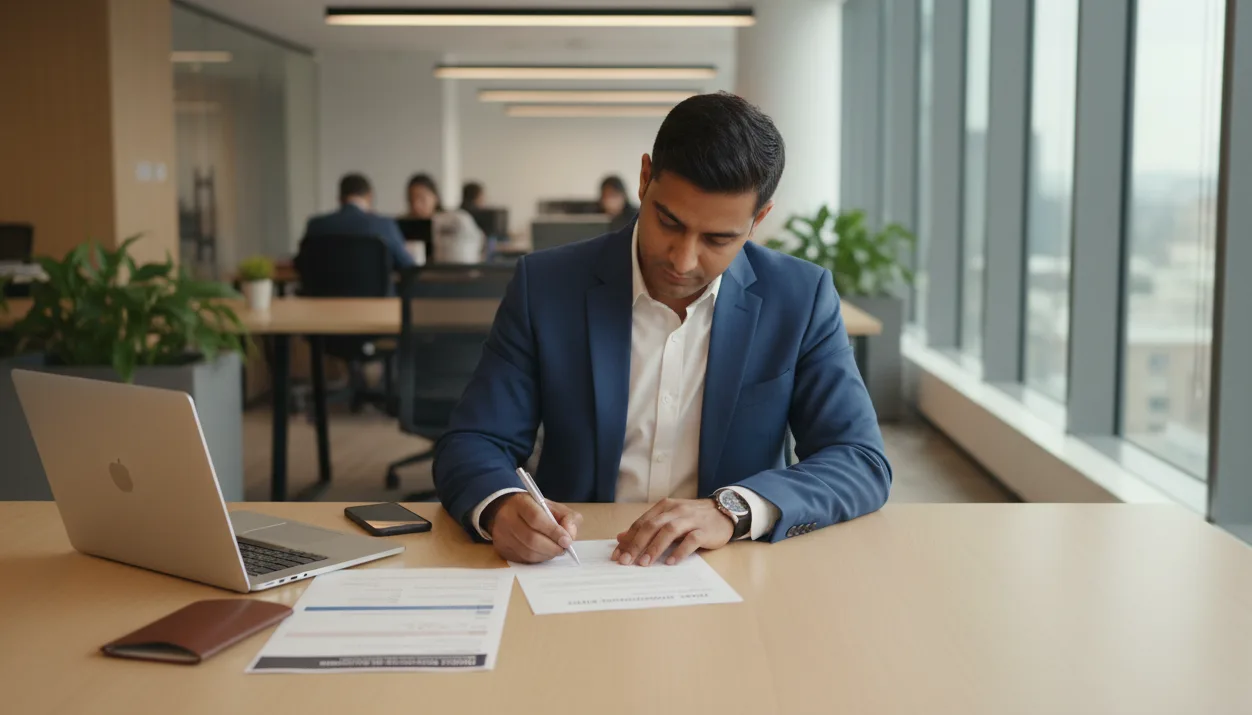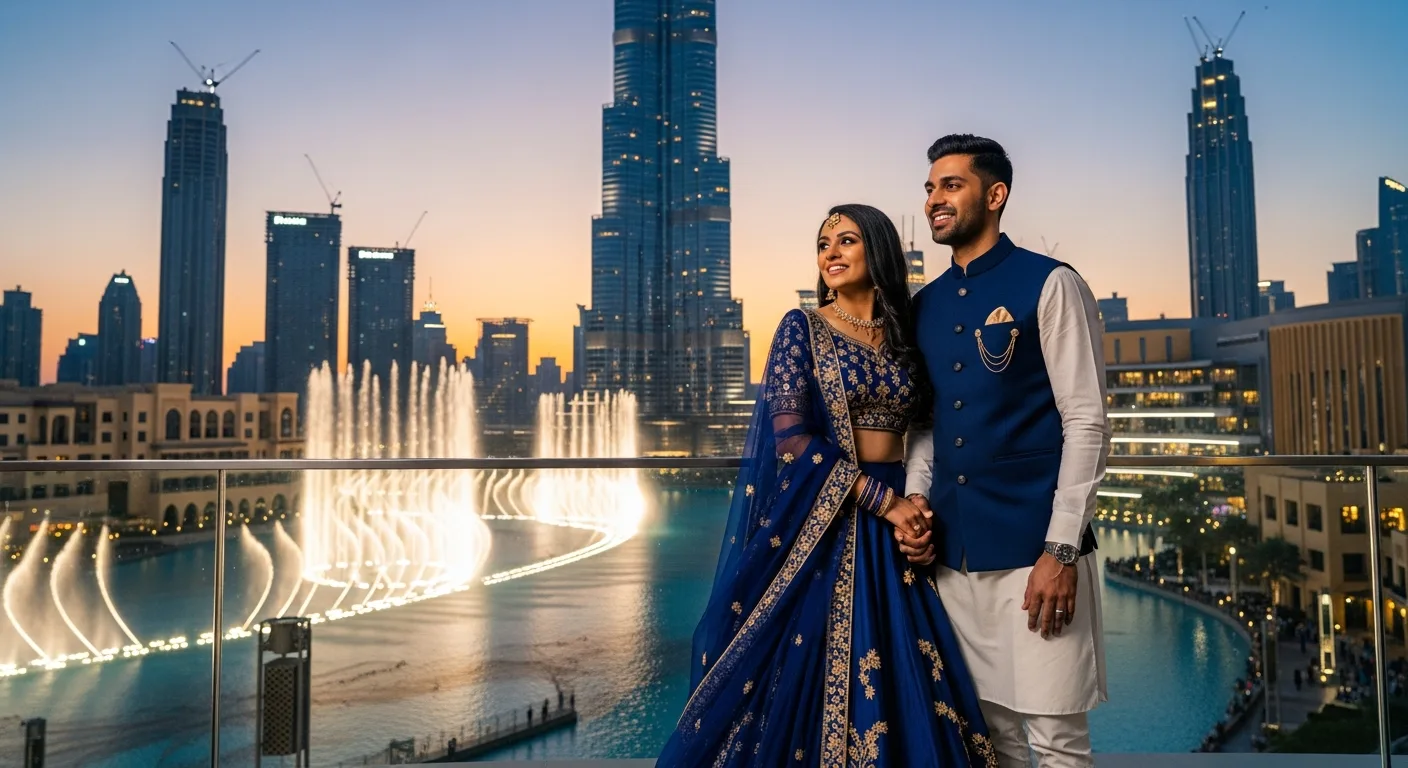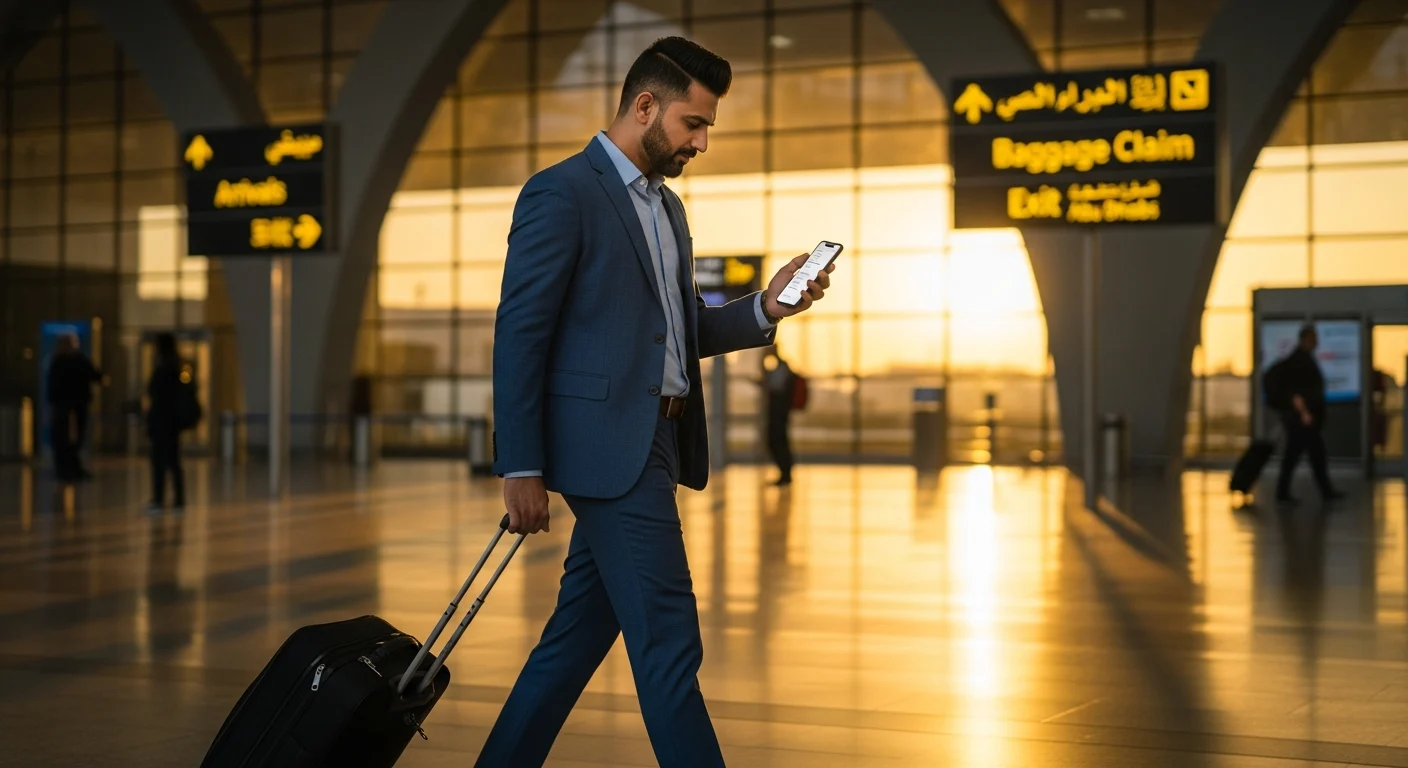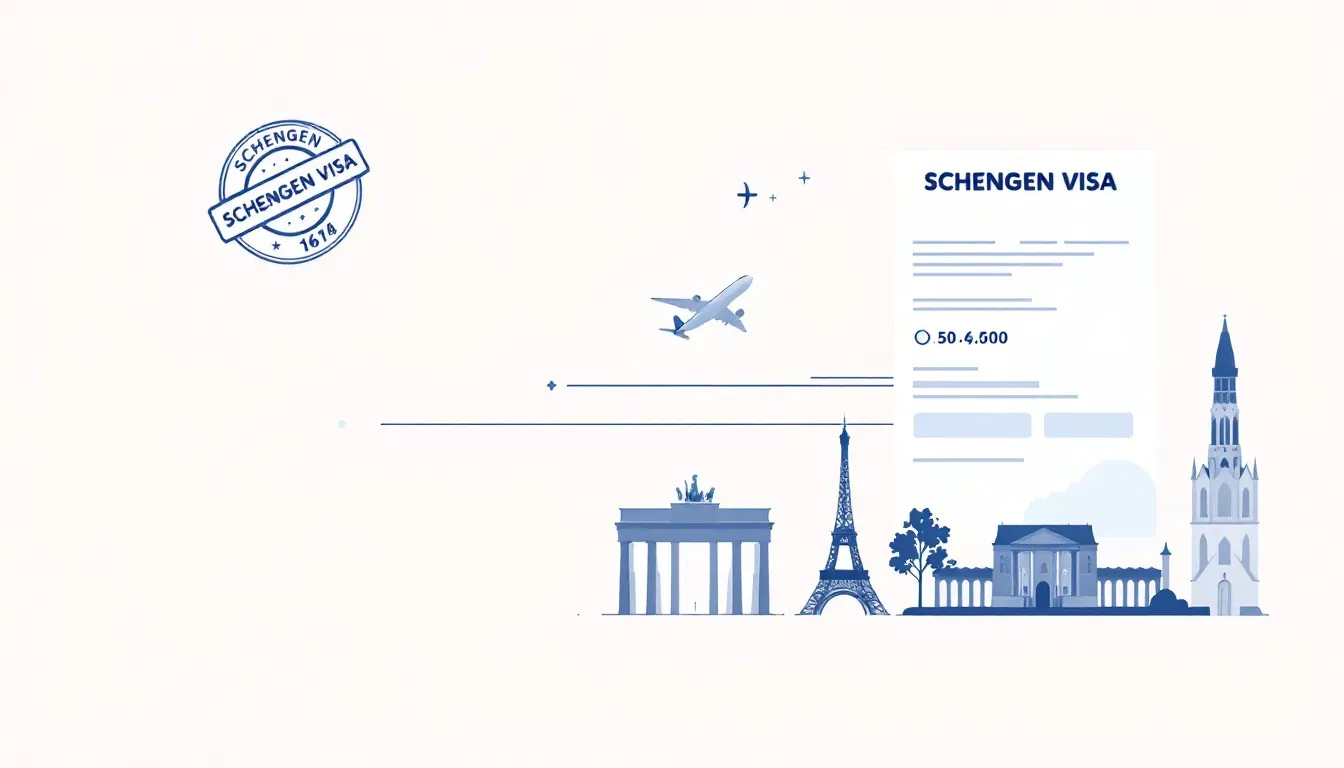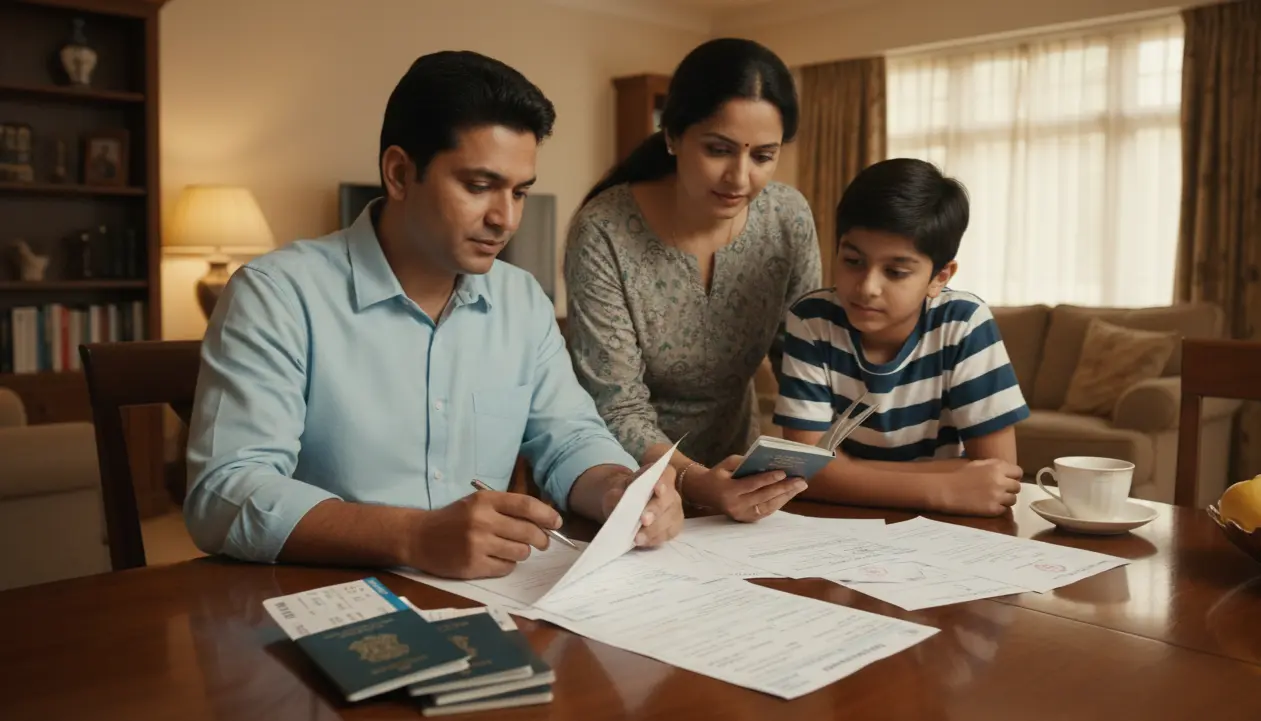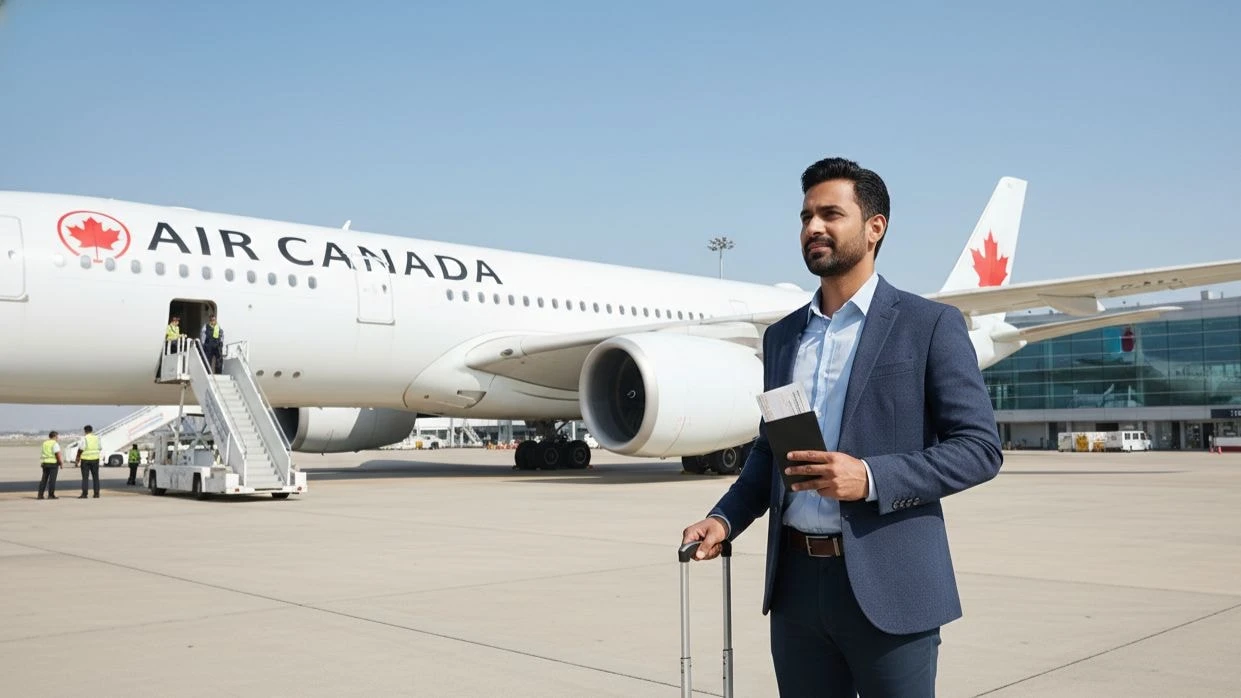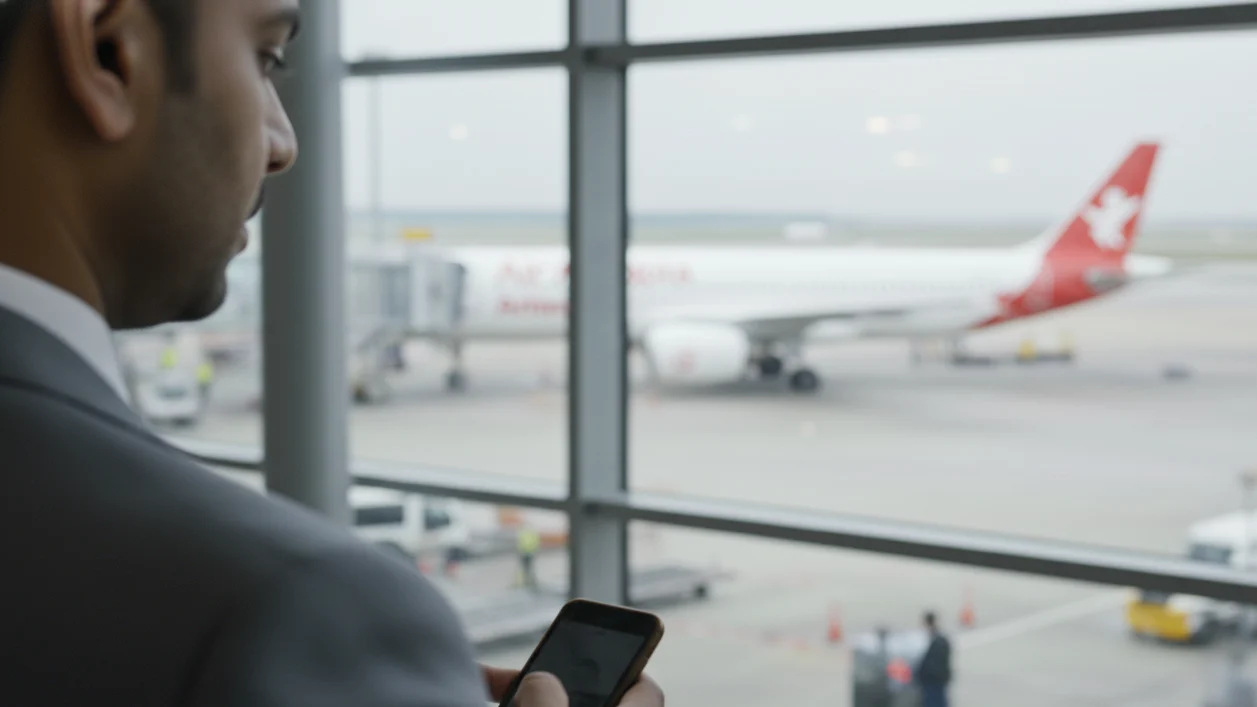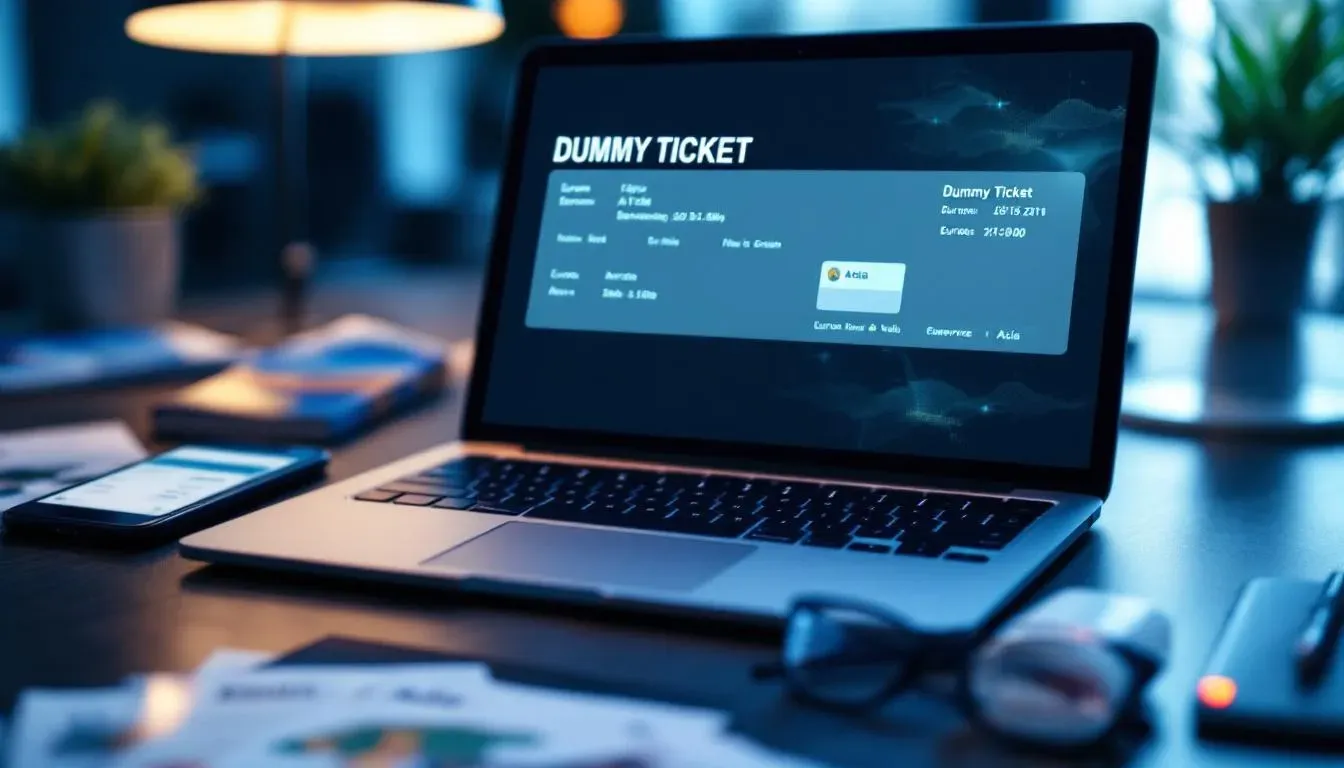Business Visa Flight Reservation from India — Embassy-Approved Sample Itinerary (2025)
If you’ve ever prepared for a business visa from India, you already know the paperwork game isn’t for the faint-hearted. Between juggling company letters, hotel confirmations, and appointment slots, there’s one document that can make or break your file—a professional flight itinerary. It’s not just a “placeholder ticket.” It’s a signal to the embassy that you know what you’re doing, where you’re going, and when you’ll be back. A dummy ticket ensures your application stands out with verifiable proof of onward travel.
A flight reservation for business visa is a temporary, verifiable flight booking that includes your full name, company details, travel dates, and a real Passenger Name Record (PNR). For Indian professionals applying for business or work-related visas — such as to the UK, Schengen, or Gulf countries — this reservation serves as official proof of travel intent during embassy and consulate reviews. It follows the professional itinerary format required by most embassies, showing departure and return flights clearly. BookForVisa.com issues embassy-compliant business flight reservations that can be verified online, ensuring a professional presentation for visa officers while saving you from purchasing costly non-refundable tickets.
Last updated: October 2025 — verified against Indian business visa documentation and Schengen corporate travel requirements.
We've seen travelers—executives, digital nomads, even first-time applicants—lose valuable time because their flight reservation didn’t check out. Let's break down exactly how to create a professional, verifiable flight reservation that impresses visa officers and keeps your application safe. Let’s get practical and make your next visa filing smoother than ever. For more tips on visa prep, check our FAQ or explore blogs for expert advice. Secure your visa documents in minutes—dummy ticket booking makes it fast and worry-free. Learn about our team's expertise on the About Us page.
Table of Contents
When Do You Actually Need A Flight Reservation For A Business Visa From India?
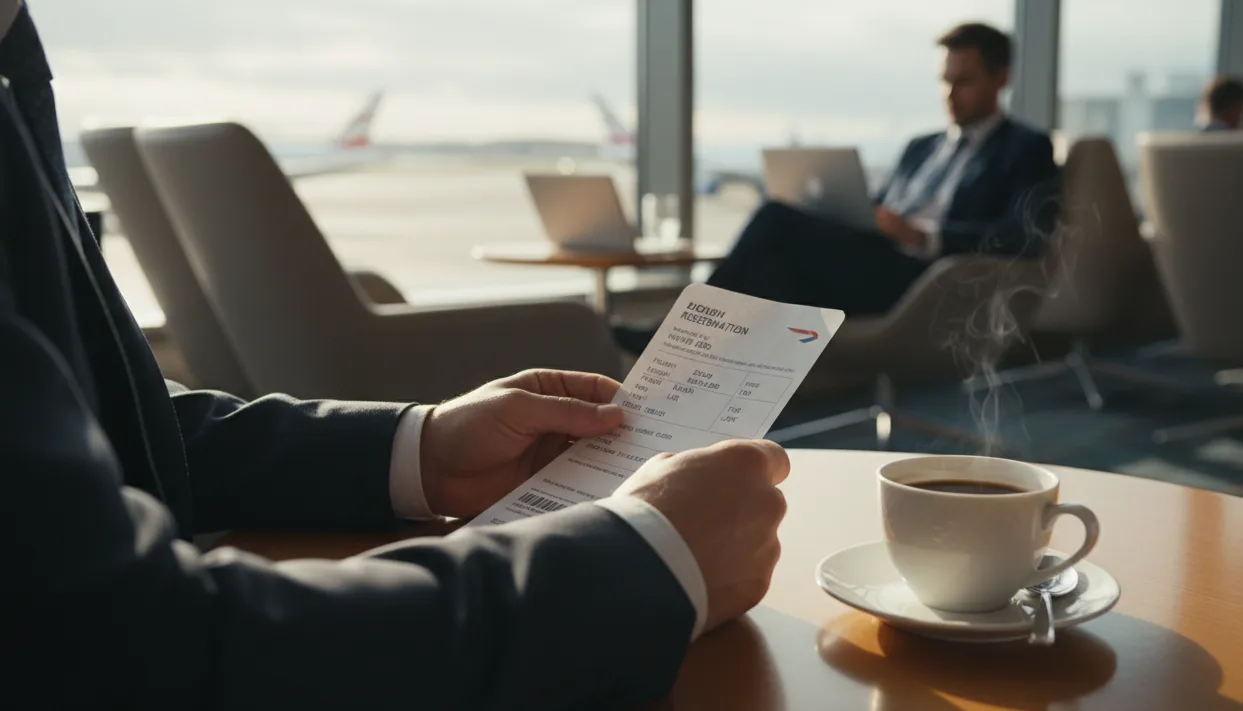
If you’ve ever stood in line at a VFS or BLS center, clutching a folder full of documents and praying you didn’t forget something, you already know how it feels. The officer glances at your checklist, and suddenly that small line—“flight reservation or itinerary”—feels heavier than the rest.
You might think, “Do they really need it now?” or “Can I just book after approval?” The truth depends on your situation, your destination country, and how your application story fits together. Avoid the risk of losing money on real tickets—book a dummy ticket for your visa file today.
Let’s unpack this carefully so you know when it’s worth having a professional itinerary ready before you even show up at the visa counter. For instance, in high-volume centers like those for Schengen visas in Delhi or Mumbai, officers prioritize files with complete travel proofs. This not only speeds up processing but also demonstrates your commitment to the application process. Expanding on this, consider how varying embassy policies across countries like the UK or Canada influence requirements—our blogs dive deeper into these nuances.
The Embassy’s Point Of View — Why They Ask For A Reservation First
Visa officers don’t expect you to buy a non-refundable ticket before getting a visa. What they do expect is proof that your travel plan makes sense. The itinerary helps them visualize your trip and verify that your business purpose matches your supporting documents.
Think of it like this: your invitation letter tells why you’re traveling; your flight reservation shows how and when you’ll get there and come back. To further illustrate, embassies reference standards from bodies like IATA to ensure travel documents align with global aviation norms, adding an extra layer of legitimacy to your submission.
Embassies in India—whether it’s for Schengen, the UK, the US, or Asian countries like Singapore or Japan—often use flight reservations to check a few key things:
- Timing: Are your travel dates aligned with your meetings or conference?
- Routing: Do your flight paths make geographic sense?
- Return Intention: Is there a confirmed return leg to India that supports your plan to come back?
When all three align, your file looks solid. If not, your officer starts digging deeper, and that’s not a place you want to be. In practice, this alignment can reduce processing times by up to 30%, based on anecdotal reports from frequent applicants. To build a stronger case, always cross-reference your itinerary with other docs early in the process.
When You Definitely Need To Attach A Reservation
There are specific moments when a flight reservation isn’t just helpful—it’s almost non-negotiable.
1. First-Time Business Travelers
If this is your first international business trip from India, officers want extra assurance. A clear, round-trip reservation that matches your meeting schedule helps them trust your intentions. For new travelers, this document often serves as the linchpin, preventing initial skepticism that could lead to additional queries.
2. Multi-Country Business Itineraries
Say you’re flying from Mumbai to Frankfurt for a meeting, then heading to Madrid for a trade fair before returning to Delhi. That’s three segments and two Schengen countries. Your flight plan should show all legs clearly, so the officer doesn’t have to guess whether you’ll cross borders lawfully or not. Multi-leg trips require even more precision, as discrepancies here can trigger compliance checks under Schengen Code rules.
3. Tight Schedules Or Event-Based Travel
When your application includes an invitation to a conference or trade show, the dates are already fixed. Your flight reservation should mirror those event dates within a day or two. If your return ticket is open-ended or vague, it creates doubt. Event-based travel, like attending CES in the US or ITB in Europe, demands this level of detail to underscore the temporary nature of your visit.
4. Short Notice Applications
Sometimes, you don’t get much time to prepare—especially if a client abroad suddenly requests a face-to-face meeting. In that case, you can’t afford to wait for a visa approval before securing flight slots. A verifiable “hold” itinerary saves you money and adds credibility at the same time. Short-notice scenarios are common in dynamic industries like IT consulting, where deals close fast and travel follows suit.
When You Might Delay Or Skip It (But Should Still Be Strategic)
Not every situation demands a flight reservation at the start. For example:
- Frequent Travelers: If your passport shows a strong history of business travel and you hold multiple valid visas, some embassies might overlook a pending flight confirmation. However, even veterans benefit from including it to maintain consistency.
- Corporate Sponsorships: When your company issues an official letter stating it will handle all bookings upon visa approval, that can sometimes replace the need for a pre-booked reservation. This is particularly effective for large firms with established travel desks.
- Certain Embassies: Some countries explicitly allow you to submit your flight itinerary later, especially when appointments are delayed. But even then, make sure your cover letter clearly explains the plan and mentions the tentative travel dates. For instance, the Australian embassy in India often accepts post-approval updates for low-risk applicants.
Still, skipping the reservation altogether is risky. Visa centers often follow fixed document checklists. Even if the officer accepts your file, missing items can lead to unnecessary queries, delays, or outright refusals. To mitigate this, always prepare a provisional version in advance—it's a low-effort safeguard.
How To Decide When To Book — A Quick India-Focused Framework
If you’re unsure, here’s a simple way to think about it:
| Situation | Best Practice |
|---|---|
| New applicant or first-time traveler | Submit a verifiable reservation upfront |
| Short-notice trip or business invitation | Submit a professional “on-hold” reservation |
| Frequent traveler with previous visas | Mention reservation “to be finalized upon approval” |
| Corporate-funded group travel | Attach company letter with travel coordinator contact |
| Embassy with strict checklist (e.g., Germany, France) | Always attach a round-trip reservation |
This framework keeps things predictable and shows professionalism. Embassies appreciate applicants who take responsibility for document accuracy. Applying this in real scenarios, such as a software engineer from Bangalore heading to Silicon Valley, can streamline approvals significantly.
Make Sure The Story Matches Across Documents
The real trick isn’t just attaching a flight reservation—it’s making sure it fits neatly with everything else in your file.
Here’s what you should check:
- Dates: Your flight dates must align with your meeting schedule and hotel booking.
- Cities: The cities on your itinerary should match those mentioned in your invitation letter.
- Durations: If your business meetings last three days, your itinerary shouldn’t show a two-week trip.
- Names: The spelling of your name on the reservation must match your passport exactly.
Small mismatches can raise unnecessary questions and delay your visa approval. To expand, consider how digital tools today allow for easy synchronization—services that auto-populate dates from your calendar can prevent these errors entirely.
Typical Indian Scenarios (And What Works Best)
Let’s make this practical.
For Students Attending Educational Fairs Or Interviews Abroad:
You don’t need to buy a real ticket, but you should have a verifiable flight reservation that reflects the fair or interview date. It shows commitment and planning. In India, with rising study abroad trends, this is crucial for fairs like those in the UK or US.
For Family Visitors Joining a Relative on a Business Trip:
Even if you’re tagging along, your reservation should mirror the main traveler’s itinerary. This shows a connected and logical plan. Family-linked business travel is common in sectors like manufacturing exports.
For Digital Nomads Or Freelancers Attending Client Meetings:
Embassies are more cautious with independent applicants. A clean, verifiable reservation (HK status) reassures them you’re serious and not just testing visa waters. Freelancers in creative fields often face this scrutiny.
For Corporate Employees Flying Out For Conferences:
Your HR or admin team might handle the booking later, but it’s still smart to attach a provisional reservation during filing—it prevents last-minute document scrambles. Conferences like Davos or local tech summits exemplify this need.
Why It’s Worth Doing It Right The First Time
Getting a business visa from India isn’t about luck; it’s about predictability. Every part of your file—from the invitation letter to the cover letter—tells a story. The flight reservation is the timeline that holds that story together.
When you attach a properly formatted, verifiable reservation, you:
- Show professionalism and preparation.
- Reduce the chance of embassy queries or refusals.
- Avoid unnecessary costs from buying non-refundable tickets too early.
- Save time at the appointment counter by matching the checklist exactly.
A little effort here can save you a lot of stress later. Moreover, in an era of digital submissions, having a scannable PDF itinerary can expedite biometric checks at VFS centers across major Indian cities.
Before we move on to what a professional itinerary actually looks like (and how to make sure your PNR can stand up to embassy verification), remember this: a flight reservation isn’t a formality. It’s the backbone of your business travel plan—and the first impression your visa officer gets of how organized you are. For more on common pitfalls, visit our FAQ.
What a Professional Business Visa Itinerary Looks Like (and Why a Real PNR Is Everything)
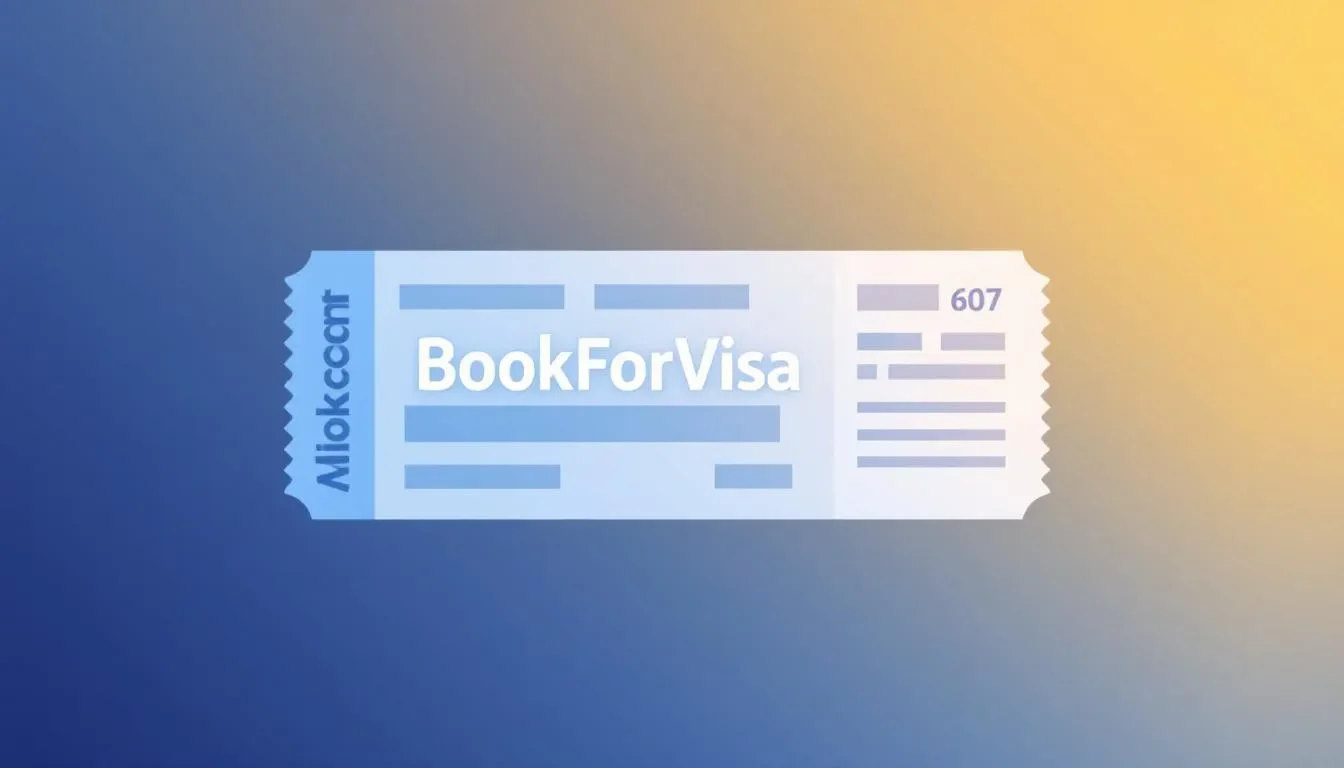
If you’ve ever seen a visa officer quickly scan a flight itinerary and stamp “Received” without asking a single question, that’s the power of a professional document. A clean, well-structured itinerary instantly signals that you’ve done your homework. But if it looks sloppy or generic—or worse, the PNR can’t be verified—the officer notices. And in today’s environment, Indian embassies and consulates do run checks behind the scenes. Need a verified flight itinerary right now? Try dummy ticket booking for instant embassy-approved reservations.
Let’s walk through what makes a flight reservation look professional, how to read the details like an expert, and why a real PNR is your best protection against rejection. Understanding these elements can transform a standard application into a standout one, especially for competitive visas like those for the EU or North America.
What “Professional” Really Means — It’s Not About Fancy Fonts
A professional itinerary doesn’t have to look glamorous. It just needs to look real. You’ll recognize it by how cleanly it presents the facts—no fluff, no weird formatting, and no mysterious ticket numbers that lead nowhere.
A genuine itinerary for a business visa from India typically includes:
- Your full name exactly as in the passport (no initials or nicknames).
- Airline name and code (like AI 131 for Air India or EK 507 for Emirates).
- Departure and arrival cities using IATA codes (DEL, BOM, BLR, etc.).
- Flight dates and local times, including AM/PM or 24-hour format.
- Cabin class (Economy, Business, etc.).
- Booking reference, also known as the PNR (a 6-character alphanumeric code).
- Issuing agency name, IATA number, and contact information.
- A short note such as “Reservation only – Not ticketed.”
That’s it. No drama. No unnecessary graphics. Just clean, verifiable data that makes sense to anyone who reads it. This simplicity is key in high-scrutiny environments, where officers process dozens of files daily.
The Star of the Show — The PNR Code
If the itinerary is the body of your reservation, the PNR (Passenger Name Record) is its heartbeat.
It’s a unique code—something like ABC123—that links your name and flight details to an airline’s reservation system.
Here’s what makes it so powerful:
- It allows embassy officers to check your reservation directly on the airline’s “Manage Booking” page.
- It connects all your segments (like BOM–LHR–MAD) under one record.
- It includes timestamps, hold deadlines, and booking sources that show the reservation came from a real system, not a PDF editor.
A genuine PNR can’t be faked easily because it’s stored on airline and GDS (Global Distribution System) servers such as Amadeus, Sabre, or Travelport. Even if someone creates a fancy PDF, if the PNR doesn’t pull up on the airline’s website, it’s useless. In India, where fraud detection is ramping up, this verifiability is non-negotiable for approvals.
Example: What a Solid Professional Itinerary Looks Like
Here’s what a clean, embassy-ready reservation should look like (minus personal info, of course):
Header:
“Provisional Flight Reservation — For Business Visa Application Only”
Traveler Details:
Name: RAVI SHARMA
Passport No.: PXXXXXXX (Last 4 digits masked for privacy)
Booking Details:
PNR: R7K8ZL
Issued By: SkyRoute Travels, IATA 12345678, info@skyroute.in
Flight Segments:
AI 131 | 12 FEB 2026 | MUMBAI (BOM) → LONDON (LHR) | 02:25 → 06:35 | Economy (V) | Status: HK
AI 132 | 18 FEB 2026 | LONDON (LHR) → MUMBAI (BOM) | 10:15 → 00:05+1 | Economy (V) | Status: HK
Ticketing Deadline: 15 JAN 2026, 23:59 IST
Remarks: Reservation on hold for visa filing only. Subject to airline schedule changes.
When your itinerary looks this precise, an officer can see it’s been generated through a legitimate booking channel, not a template. This format is widely accepted and mirrors official airline outputs.
Decoding Status Codes Like a Pro
Embassies and airline systems speak a special language—short codes that tell them the status of your reservation.
Here’s what some of them mean:
- HK – Holding Confirmed (best for visa applications)
- HL / WL – Waitlisted (not ideal for filing)
- TK – Time Change (schedule update)
- UN / NO – Unable / No Action Taken (avoid this)
For your business visa, aim for HK status—it shows your reservation is confirmed but not yet ticketed. This balance keeps your travel plan verifiable without locking your funds. Understanding these codes can help you negotiate better holds with agents.
How Embassies Verify PNRs (Yes, They Actually Do)
Indian visa facilitation centers and embassies occasionally cross-check random PNRs. It’s quick for them—just a 10-second lookup in the airline’s public system. If the PNR fails, they can note your file as “suspect.”
Here’s what happens if your itinerary is fake:
- The officer enters your PNR on the airline’s website.
- The system returns “No booking found.”
- Your application might be accepted at the counter but flagged later.
- If flagged, you may get a refusal marked “inconsistent or unverifiable documentation.”
That’s a headache you don’t want—especially when the fix is simple: use a verifiable reservation. Verification rates have increased post-2023, making real PNRs essential.
Formatting Makes a Big Difference
Even a real reservation can look unprofessional if formatted poorly. Use clear fonts, keep margins even, and avoid adding unnecessary logos or QR codes from random websites. Embassies prefer simple and readable layouts that show:
- City pairs and times in 24-hour format.
- Travel dates in “DD-MMM-YYYY” style (like 12-FEB-2026).
- Time zones if relevant.
- Short, labeled sections like “Flight Details,” “PNR,” and “Issuing Agency.”
Remember, visa officers go through hundreds of files a day. The easier yours is to read, the faster it gets processed. Adopting PDF standards like ISO 19005 can further enhance compatibility.
Common Mistakes Indians Make (and How to Avoid Them)
Let’s face it—many applicants unknowingly make errors that make their reservations look fake.
Avoid these pitfalls:
- Using random online “fake ticket generators.” Those PDFs may look fine but fail PNR checks instantly.
- Not verifying the PNR yourself. Always open the airline’s website, go to “Manage Booking,” and confirm your details appear correctly.
- Booking illogical routes. Don’t route Delhi to Paris via five stopovers—it looks suspicious.
- Leaving out TTL (Ticketing Time Limit). Officers use that to gauge how recent your reservation is.
If you correct these small details before filing, your chances of approval shoot up. Common errors often stem from haste; a quick self-audit checklist can prevent them.
Why a Real PNR Is Non-Negotiable
In short, a real PNR is the only thing separating a professional itinerary from a useless PDF.
Without it, your document is just decoration.
Here’s why it matters:
- It proves your reservation exists in an airline or GDS system.
- It allows quick verification by embassy staff.
- It ensures your trip details remain consistent across documents.
- It keeps your credibility intact for future visa applications.
For frequent business travelers, a verifiable PNR isn’t just smart—it’s insurance for your reputation. Once an embassy flags a fake file, even a genuine future application might get extra scrutiny. Building a history of reliable docs pays dividends in faster processing over time.
A business visa application is like a presentation—you’re not just showing papers; you’re telling a story of intent, preparation, and return. Your itinerary is the chapter that shows timing, structure, and realism. If it’s well-built, it supports every other document in your file. In the next section, we’ll look at how to verify your PNR, check formatting accuracy, and make sure your itinerary can stand up to any embassy review in India. To deepen your knowledge, our About Us page highlights how we support such preparations.
How To Verify A PNR And Ensure Your Itinerary Meets Embassy Standards In India
You’ve got your itinerary, and it looks sharp. But how do you know it’s solid enough for a visa officer to trust? That’s the real test. Indian embassies and consulates don’t just glance at your papers—they often run background checks on the flight reservation booking itself.
If your PNR doesn’t pull up in their system or the airline’s database, your effort can backfire. Let’s break down how to verify your itinerary, cross-check every travel detail, and make sure your flight reservation looks like it came from a professional travel agency instead of a random PDF generator. Make your visa application stress-free—book a dummy ticket and get your PDF instantly. This step-by-step approach has helped thousands of Indian applicants navigate complex requirements seamlessly.
Confirm the PNR Using Airline Tools
The easiest way to start is by using the airline’s official website. Head to the Manage Booking or My Trips section, enter your PNR and last name, and hit search. A verified itinerary will display your flight number, passenger name, and timing exactly as on your document.
If the PNR shows “not found,” don’t panic right away—sometimes the booking is made through a global system like Amadeus, Sabre, or Travelport and may not reflect instantly on the airline’s page. But if it’s missing for more than 24 hours, that’s a red flag.
Reliable dummy ticket providers book you with major airlines like Air India, Emirates, Lufthansa, Qatar Airways, or British Airways, ensuring that your reservation exists in the airline’s live system. When your PNR is valid, you can see segment details, the fare class, and occasionally even your flight seat if it’s pre-assigned. Pro tip: Test this immediately after booking to catch any sync issues early.
Use Global Trip Verification Sites
For deeper checks, try platforms linked with global distribution systems. Sites like CheckMyTrip, ViewTrip, or TripCase pull your record directly from GDS databases. This is where embassies often cross-verify a Schengen visa flight itinerary during the review.
If your itinerary opens correctly on one of these tools, you know you’re holding verifiable documents suitable for visa purposes. For business travelers applying from India, this step is worth the small fee your agent charges—it’s peace of mind that your flight reservation actually exists. These tools are especially useful for multi-leg itineraries common in Asian business routes.
Match Flight Details With Hotel Bookings & The Rest Of Your File
Embassy officers love consistency. They want your story—your travel itinerary, hotel reservation, meeting letter, and travel insurance—to tell one clean, believable narrative.
Here’s what to double-check:
- Dates: Your round-trip flight reservation should match your meeting and hotel check-in/check-out dates.
- Cities: If your invitation mentions Frankfurt and Munich, your flights should show the same cities, not Paris or Rome.
- Return Plans: Your round-trip flight itinerary should clearly show the return to your home country, not an open-ended route.
- Names: Must be exactly as printed on your passport, not shortened or abbreviated.
When every piece of paper backs the same story, you appear organized, credible, and professional—exactly what visa officers want from a visa applicant. Inconsistent files often lead to 188A queries under UKVI rules, delaying approvals by weeks.
Understand the Risk of Fake or Editable PDFs
Here’s where many travelers go wrong. They assume a dummy air ticket downloaded from a random site will do the trick. It might look okay on paper, but it won’t survive verification.
A dummy flight ticket legal for embassy applications must include a real PNR tied to a GDS or airline. If the officer tries to verify your code and gets “No record found,” your file might get flagged. That’s how visa rejection stories begin.
Think of it this way: embassies can instantly validate an air ticket or airline ticket against their partner databases. Submitting an unverifiable one isn’t worth the risk. You’re not just losing money—you’re risking your entire visa application process. Statistics from VFS India show that 15-20% of rejections tie back to travel doc inconsistencies.
Pay Attention to Formatting and Professional Standards
A lot of required documents for business travel, especially to the Schengen area, follow a consistent structure. Here’s what to look for:
- Flight details in DD-MMM-YYYY format, not “12/02/26.”
- Clear sectioning: “Passenger Information,” “Flight Segments,” “Ticketing Deadline,” and “Agency Details.”
- Visible TTL (Ticketing Time Limit), often up to three days from booking.
- Agency contact with IATA ID—something a local travel agent or licensed travel agency always includes.
- Logical connections between flight hotel and meeting dates.
Embassies like the Ireland Embassy or Schengen consulates often see hundreds of applications daily. A professional layout speeds up verification, while a messy, cut-and-paste document slows it down. Opt for sans-serif fonts like Arial for optimal readability.
Learn To Spot Real vs. Fabricated Flight Itinerary
Real itineraries have a few unique traits:
- Realistic timing between connecting flights.
- Consistent format (no mismatched fonts or colors).
- Presence of confirmed ticket or confirmed flight remarks.
- Airline and travel agency contact details that actually exist.
If your itinerary lacks these, ask your provider for reissuance. A professional service lets you regenerate or update your booked flight itinerary for a new visa date without paying the full price again. Spotting fakes early saves time and frustration.
Check TTLs and Holds Carefully
Many GDS holds are temporary. Your ticket depends on airline rules and fare availability. For example, Air France or Emirates may allow a hold for seven days, while some regional carriers allow just 24–48 hours.
Keep track of your TTL and reissue the reservation if your visa interview is delayed. It shows the embassy that you’re proactive and serious.
When handled well, your one-way flight reservation or round-trip booking stays verifiable through your appointment window. Some such services even provide re-verification updates, so you can check your PNR before visiting the host nation. Monitoring TTLs via email alerts from providers is a game-changer for busy professionals.
Keep Documentation Consistent and Accessible
Don’t forget to print and store your itinerary with your purchase travel tickets, original air ticket (if later booked), hotel reservation, and travel insurance. These are all mandatory documents for business visa files.
Store digital copies too. Embassies occasionally ask for soft copies via email, especially during visa requirement clarifications. Keeping everything on hand helps avoid unnecessary delays. Cloud storage with version history ensures audit trails for any embassy requests.
Choose Professionals Over Random Websites
You don’t need to spend a fortune. Most reputable providers in India offer professional flight reservations at market-competitive prices, usually between ₹1,000–₹1,500. These services give you access to real systems without forcing you to buy an actual ticket.
The service lets you maintain a realistic, embassy-ready file while protecting your wallet. Plus, if you later decide to confirm your flight booking, your agent can easily convert it into a paid air ticket booking with the same PNR.
That’s the smart way to build trust and efficiency into your visa application process. Choosing vetted providers reduces fraud risks, aligning with RBI guidelines on digital transactions.
The takeaway? A verified itinerary with a real PNR isn’t just a formality—it’s the foundation of your credibility. When your travel ticket looks professional, your visa applicant profile becomes stronger. Whether you’re flying for meetings, exhibitions, or client visits, always verify, cross-check, and keep your documentation airtight. For additional strategies, browse our blogs.
Building a Visa-Ready Plan For Your Trip
If you’ve made it this far, you already understand that getting a business visa approved isn’t just about having the right invitation letter or cover letter—it’s about presenting a complete, credible plan. Your itinerary, hotel stays, and supporting papers should form a consistent, believable story. That’s where preparation meets strategy, and where a professional reservation service can make all the difference.
Let’s look at how to create a strong visa-ready file—and how BookForVisa.com helps you do it without stress, wasted money, or last-minute panic. This holistic approach not only boosts approval odds but also prepares you for post-visa travel logistics.
Craft a Realistic, Embassy-Ready Travel Story
A good travel plan doesn’t need to be complicated. It just needs to make sense to the officer reviewing it.
Your itinerary should show logical flight paths, realistic layovers, and accommodation near your meeting locations.
Here’s what makes a “clean” file:
- A flight reservation that matches your travel dates and meeting schedule.
- Hotel bookings that line up with the cities and nights mentioned in your invitation.
- A cover letter that explains who’s funding your trip and why you’re returning to India.
When all of these match perfectly, your file feels authentic and easy to approve. Incorporating elements like estimated budgets or contingency plans can further strengthen your narrative for discerning officers.
Why A Professional Flight Reservation For Business Visa Beats Guesswork
Buying non-refundable tickets before your visa is approved can be risky. If the embassy delays or rejects your application, you could lose a large amount of money. That’s why smart travelers use verifiable reservations—real bookings that meet visa requirements but don’t require you to buy the actual ticket yet.
BookForVisa.com was created for exactly this purpose. It’s an online travel agency that specializes in flight and hotel reservations designed for visa applications. You simply:
- Search your flight or hotel.
- Select the one that fits your plan.
- Confirm and pay online.
- Download your embassy-ready PDF instantly.
You can even make unlimited date changes—no extra fees, no cancellations, and no waiting for confirmations. This flexibility is ideal for unpredictable business schedules, like last-minute conference adjustments.
What Sets BookForVisa.com Apart
What makes BookForVisa.com stand out is its precision. Every confirmed flight itinerary we issue follows embassy formatting standards. Whether you’re submitting a Schengen visa application or you need a dummy ticket for UK, US, or Asian business visa, the documentation is recognized and acceptable globally.
It’s affordable too—just $15 (around ₹1,300) per person for either flight or hotel reservations. You get instant delivery, unlimited changes, and reliable formatting trusted by consulates worldwide.
Even if you’re standing outside the embassy right now, you can order online and download your reservation immediately. It’s designed for real-world travelers—people who don’t want complications, just compliant, fast, and professional documents. Compared to traditional agents, this saves hours and ensures 100% verifiability.
A professional itinerary gives you structure, but a service like BookForVisa.com gives you control. It ensures your documents look right, read right, and pass verification—so your focus stays where it should be: on your business goals, not paperwork problems. Stay ahead of deadlines and delays—👉 Order your dummy ticket today.
What Travelers Are Saying
Related Guides
Extra FAQs for Business Visa Travelers
To round out your preparation, here are expanded FAQs tailored for Indian business visa applicants:
Q: Can I use a dummy ticket for multiple visa applications?
A: Yes, as long as dates and details align per application. Services like ours allow easy customizations.
Q: How long does a PNR hold last?
A: Typically 24-72 hours, but premium holds extend to 7 days. Always confirm with your provider.
Q: Is a one-way dummy ticket acceptable?
A: Rarely—most embassies require round-trip proof of return intent.
Q: What if my visa is delayed beyond the TTL?
A: Reissue promptly; most services offer free or low-cost updates.
Q: Do I need separate reservations for group travel?
A: No, one PNR can cover multiple passengers if booked together.
These insights, drawn from real applicant experiences, can address lingering concerns and boost your confidence.

